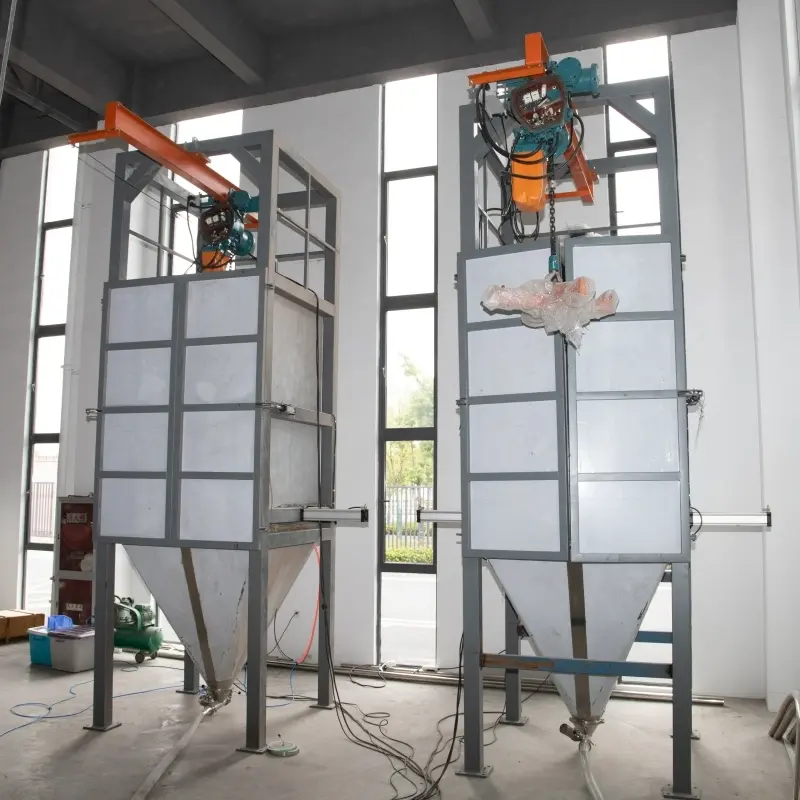Loss-in-weight Feeder Selection Guide: How to find the best equipment for your production needs
Release time: 2025-03-31
In modern production processes, accurately controlling the amount of material fed is the key to ensuring product quality and production efficiency. industrial loss-in-weight feeder is a commonly used material feeding device that can ensure that the material fed each time is accurate by real-time monitoring and adjusting the material feeding amount. Choosing a suitable Loss-in-weight Feeder is crucial to improving production efficiency, reducing raw material waste, and reducing equipment failures. This article will introduce in detail how to choose a suitable Loss-in-weight Feeder according to production needs to help you make a smarter purchasing decision.
1. Understand the basic working principle
The working method of high-precision gravimetric feeder is: by weighing the weight of the material in the hopper, the feeding speed is controlled in real time. It will automatically adjust the feeding amount according to the weight change of the material to ensure that the amount of material provided each time is accurate.
2. Clarify your production needs
Material type: First figure out what material you need to feed. Is it powder, granules, liquid or paste? Different materials require different types of equipment to handle.
Production scale: How much material do you need to handle every day? When purchasing, make sure that the maximum feed rate of the equipment can meet your production needs.
Production environment: In what environment does the equipment need to work? Are there special requirements such as high temperature, humidity, dust, etc.? These will affect the choice of equipment.
3. Accuracy and speed requirements
Accuracy: Some production processes require very high accuracy of materials, such as the need to add raw materials strictly in proportion. When choosing equipment, make sure it can provide the accuracy you need.
Response speed: If you need to quickly adjust the feed rate in your production process, the response speed of the equipment is also very important. Choose a continuous loss in weight feeder that can be adjusted quickly to keep production stable.
4. Ease of use and maintenance
Compatible with other equipment: You need to make sure that the Loss-in-weight Feeder is compatible with other production equipment (such as mixers or conveying systems) without causing work interruptions.
Cleaning and maintenance: Choose equipment that is easy to clean and maintain to reduce downtime. If the equipment has a modular design, it will be easier to replace parts.
5. Load capacity and control system
Load capacity: According to your needs, choose a device that can handle the load you need. If you need to handle a large amount of material, the load capacity of the equipment must be sufficient.
Control system: Today’s equipment usually has an intelligent control system that can monitor and adjust the feed amount in real time. Choosing a device with an advanced control system will help improve production efficiency.
6. Automation requirements
If your production line needs to be automated, choose equipment with automatic calibration and automatic adjustment functions. This can reduce manual intervention, save time and cost.
7. Capacity and storage
Hopper capacity: If your production process requires continuous feeding, choose a large-capacity device to reduce the trouble of frequent material replenishment.
Storage requirements: The hopper and storage facilities of the equipment must also meet your storage needs to ensure that production will not stagnate due to material shortages.
In short, choosing a suitable loss in weight feeder system can not only improve production efficiency and reduce material waste, but also help companies improve their overall competitiveness. When purchasing, it is crucial to understand your own production needs and pay attention to the accuracy, performance and maintenance convenience of the equipment. By comprehensively considering these factors, choosing Jiangsu Awesome‘s efficient and reliable equipment will provide strong protection for your production process and bring long-term economic benefits and stable production operations to the company.


